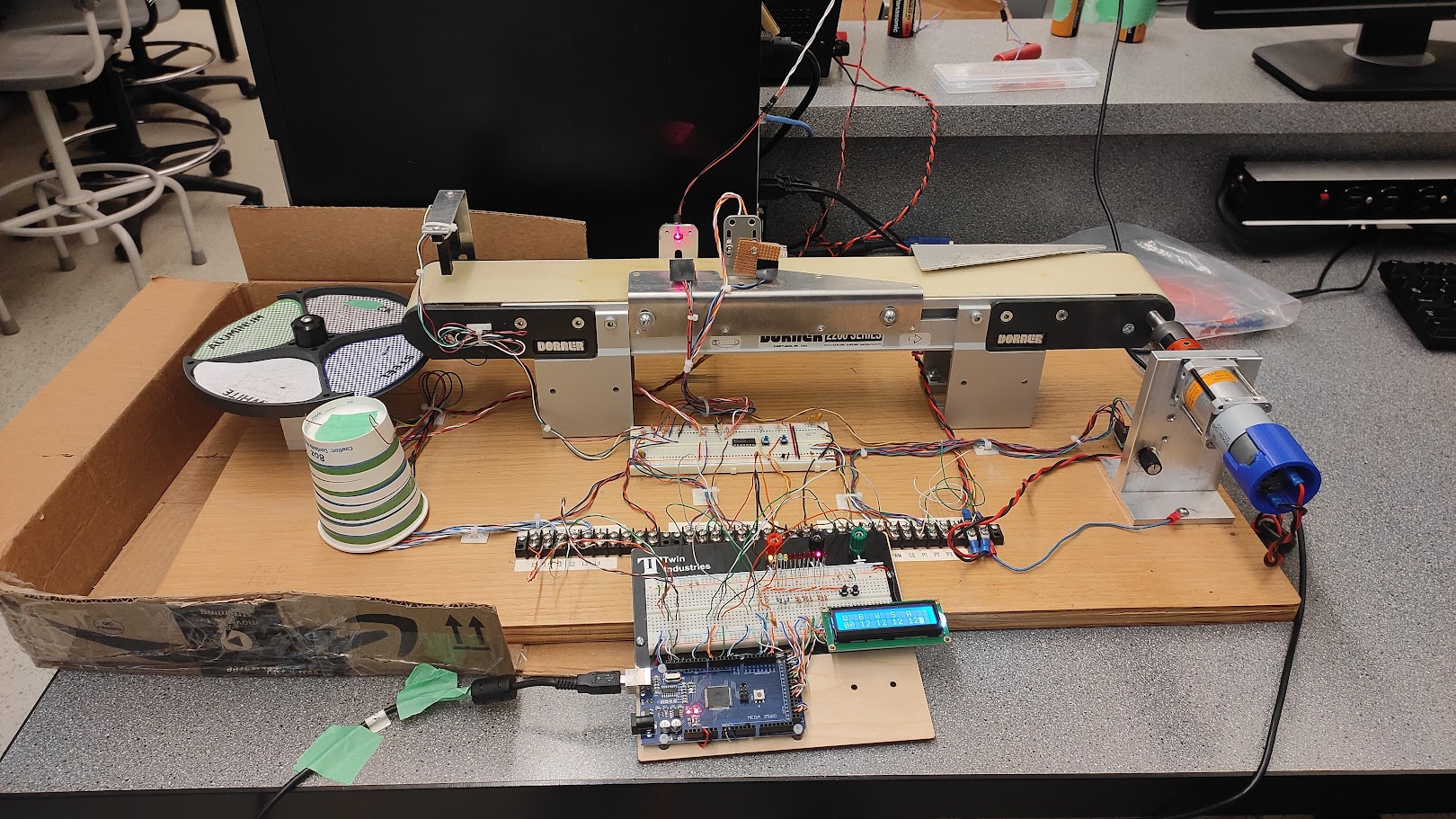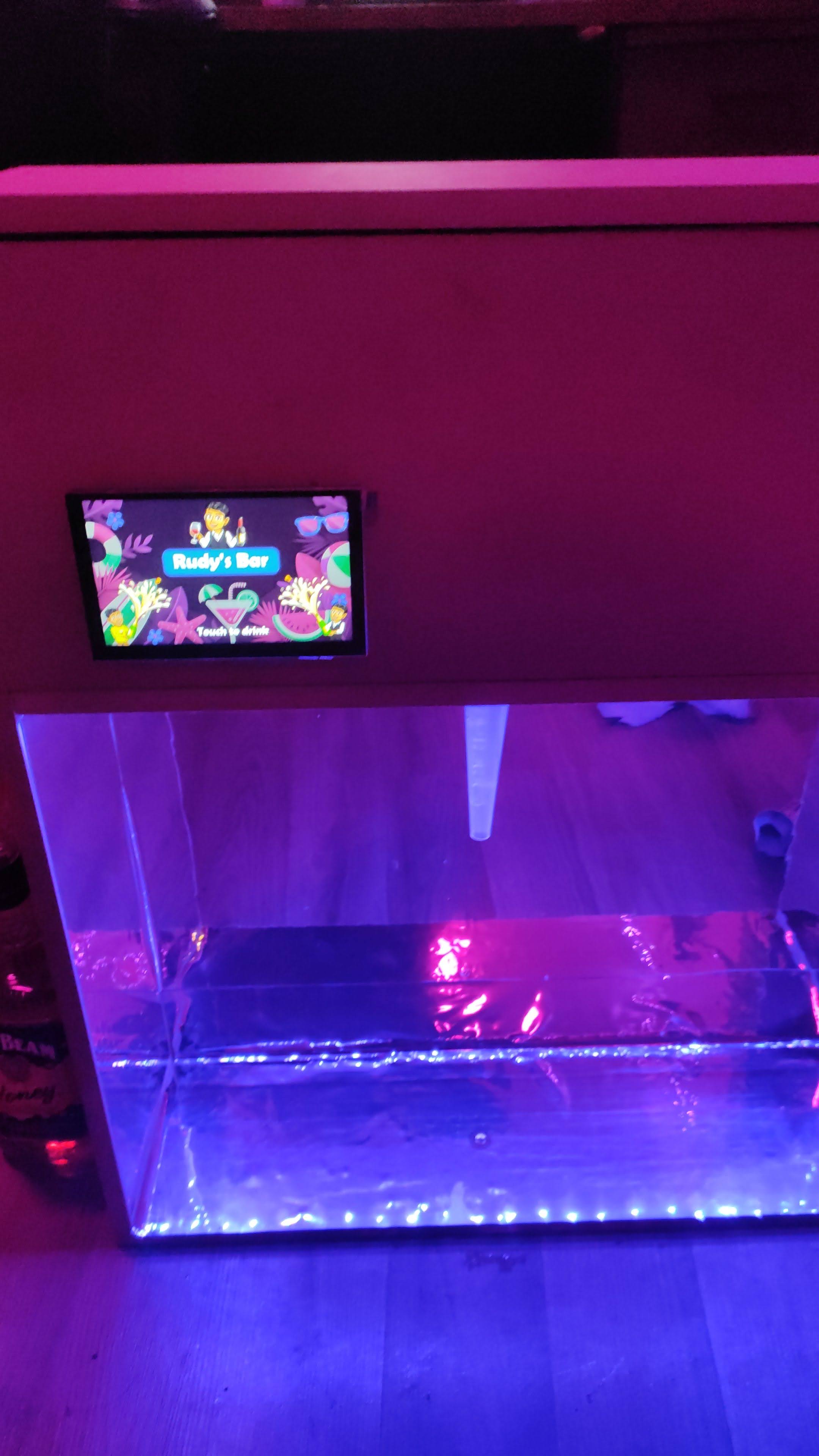Smart Home System
Smart Home System
Smart Home System
Overview
I developed a smart home system to explore the capabilities of Arduino in home automation. The system aimed to provide a customizable, affordable solution for controlling household appliances using a mobile app, enhancing convenience and accessibility for users.
Technical Approach
System Components:
Microcontroller: Arduino for controlling the system.
Bluetooth Module: HC-06 for wireless communication between the Arduino and the mobile app.
Relays: To control high-voltage appliances.
Switches: Integrated into a custom switchboard.
Sensors: Motion sensor to automate lighting based on movement.
Mobile App: Developed using MIT App Inventor for controlling the appliances via Bluetooth.
Power Supply: Managed through a relay module to handle 240V loads.
Development Process:
Initial Research and Planning: I researched existing smart home systems and identified the need for a customizable, cost-effective solution. I developed criteria for my product and created a Gantt chart to organize the development process.
Component Selection and Testing: I chose the Arduino due to its sufficient input/output pins for the project. I experimented with small circuits to understand the components' functions and tested various Bluetooth modules for optimal performance.
Circuit Design and Assembly: I designed the circuit to integrate the Arduino, relays, Bluetooth module, and sensors. I created blueprints and assembled the components on a breadboard before transferring them to a final custom-built switchboard.
Programming: I programmed the Arduino using the Arduino IDE to control the appliances and the motion sensor. The mobile app was developed using MIT App Inventor, enabling Bluetooth communication with the Arduino.
Testing and Refinement: I tested the system extensively, identifying and solving issues with connectivity, power management, and user interface. I incorporated feedback to improve the system's reliability and usability.
Challenges and Solutions
Bluetooth Connectivity:
Challenge: Ensuring stable Bluetooth communication between the mobile app and the Arduino.
Solution: I selected the HC-06 Bluetooth module for its reliable range and connectivity and optimized the app's code for better communication.
Power Management:
Challenge: Safely managing the power supply for high-voltage appliances.
Solution: I used relays capable of handling 240V loads and included safety measures to prevent short circuits and power surges.
User Interface:
Challenge: Creating an intuitive and user-friendly mobile app.
Solution: I developed a simple interface with clearly labeled buttons and status indicators, ensuring ease of use for all users.
Project Outcomes
Current Functionality:
The smart home system can control up to four appliances and a motion sensor for automated lighting.
The system is operated through a mobile app, providing remote control via Bluetooth.
The custom switchboard integrates seamlessly with existing home wiring.
Limitations:
The system's range is limited to Bluetooth connectivity, requiring proximity to the controlled appliances.
The initial app design was functional but lacked advanced features and user-friendly aesthetics.
Future Improvements
Extended Connectivity: Incorporating Wi-Fi to enable control from anywhere, not limited by Bluetooth range.
Enhanced User Interface: Redesigning the mobile app for a more modern and intuitive user experience.
Additional Features: Integrating voice control and advanced automation scenarios to increase functionality.
Conclusion
The Smart Home System project demonstrated the potential of using Arduino for affordable and customizable home automation solutions. Despite its limitations, the project provided valuable insights and laid the groundwork for future advancements in smart home technology.
Overview
I developed a smart home system to explore the capabilities of Arduino in home automation. The system aimed to provide a customizable, affordable solution for controlling household appliances using a mobile app, enhancing convenience and accessibility for users.
Technical Approach
System Components:
Microcontroller: Arduino for controlling the system.
Bluetooth Module: HC-06 for wireless communication between the Arduino and the mobile app.
Relays: To control high-voltage appliances.
Switches: Integrated into a custom switchboard.
Sensors: Motion sensor to automate lighting based on movement.
Mobile App: Developed using MIT App Inventor for controlling the appliances via Bluetooth.
Power Supply: Managed through a relay module to handle 240V loads.
Development Process:
Initial Research and Planning: I researched existing smart home systems and identified the need for a customizable, cost-effective solution. I developed criteria for my product and created a Gantt chart to organize the development process.
Component Selection and Testing: I chose the Arduino due to its sufficient input/output pins for the project. I experimented with small circuits to understand the components' functions and tested various Bluetooth modules for optimal performance.
Circuit Design and Assembly: I designed the circuit to integrate the Arduino, relays, Bluetooth module, and sensors. I created blueprints and assembled the components on a breadboard before transferring them to a final custom-built switchboard.
Programming: I programmed the Arduino using the Arduino IDE to control the appliances and the motion sensor. The mobile app was developed using MIT App Inventor, enabling Bluetooth communication with the Arduino.
Testing and Refinement: I tested the system extensively, identifying and solving issues with connectivity, power management, and user interface. I incorporated feedback to improve the system's reliability and usability.
Challenges and Solutions
Bluetooth Connectivity:
Challenge: Ensuring stable Bluetooth communication between the mobile app and the Arduino.
Solution: I selected the HC-06 Bluetooth module for its reliable range and connectivity and optimized the app's code for better communication.
Power Management:
Challenge: Safely managing the power supply for high-voltage appliances.
Solution: I used relays capable of handling 240V loads and included safety measures to prevent short circuits and power surges.
User Interface:
Challenge: Creating an intuitive and user-friendly mobile app.
Solution: I developed a simple interface with clearly labeled buttons and status indicators, ensuring ease of use for all users.
Project Outcomes
Current Functionality:
The smart home system can control up to four appliances and a motion sensor for automated lighting.
The system is operated through a mobile app, providing remote control via Bluetooth.
The custom switchboard integrates seamlessly with existing home wiring.
Limitations:
The system's range is limited to Bluetooth connectivity, requiring proximity to the controlled appliances.
The initial app design was functional but lacked advanced features and user-friendly aesthetics.
Future Improvements
Extended Connectivity: Incorporating Wi-Fi to enable control from anywhere, not limited by Bluetooth range.
Enhanced User Interface: Redesigning the mobile app for a more modern and intuitive user experience.
Additional Features: Integrating voice control and advanced automation scenarios to increase functionality.
Conclusion
The Smart Home System project demonstrated the potential of using Arduino for affordable and customizable home automation solutions. Despite its limitations, the project provided valuable insights and laid the groundwork for future advancements in smart home technology.
Overview
I developed a smart home system to explore the capabilities of Arduino in home automation. The system aimed to provide a customizable, affordable solution for controlling household appliances using a mobile app, enhancing convenience and accessibility for users.
Technical Approach
System Components:
Microcontroller: Arduino for controlling the system.
Bluetooth Module: HC-06 for wireless communication between the Arduino and the mobile app.
Relays: To control high-voltage appliances.
Switches: Integrated into a custom switchboard.
Sensors: Motion sensor to automate lighting based on movement.
Mobile App: Developed using MIT App Inventor for controlling the appliances via Bluetooth.
Power Supply: Managed through a relay module to handle 240V loads.
Development Process:
Initial Research and Planning: I researched existing smart home systems and identified the need for a customizable, cost-effective solution. I developed criteria for my product and created a Gantt chart to organize the development process.
Component Selection and Testing: I chose the Arduino due to its sufficient input/output pins for the project. I experimented with small circuits to understand the components' functions and tested various Bluetooth modules for optimal performance.
Circuit Design and Assembly: I designed the circuit to integrate the Arduino, relays, Bluetooth module, and sensors. I created blueprints and assembled the components on a breadboard before transferring them to a final custom-built switchboard.
Programming: I programmed the Arduino using the Arduino IDE to control the appliances and the motion sensor. The mobile app was developed using MIT App Inventor, enabling Bluetooth communication with the Arduino.
Testing and Refinement: I tested the system extensively, identifying and solving issues with connectivity, power management, and user interface. I incorporated feedback to improve the system's reliability and usability.
Challenges and Solutions
Bluetooth Connectivity:
Challenge: Ensuring stable Bluetooth communication between the mobile app and the Arduino.
Solution: I selected the HC-06 Bluetooth module for its reliable range and connectivity and optimized the app's code for better communication.
Power Management:
Challenge: Safely managing the power supply for high-voltage appliances.
Solution: I used relays capable of handling 240V loads and included safety measures to prevent short circuits and power surges.
User Interface:
Challenge: Creating an intuitive and user-friendly mobile app.
Solution: I developed a simple interface with clearly labeled buttons and status indicators, ensuring ease of use for all users.
Project Outcomes
Current Functionality:
The smart home system can control up to four appliances and a motion sensor for automated lighting.
The system is operated through a mobile app, providing remote control via Bluetooth.
The custom switchboard integrates seamlessly with existing home wiring.
Limitations:
The system's range is limited to Bluetooth connectivity, requiring proximity to the controlled appliances.
The initial app design was functional but lacked advanced features and user-friendly aesthetics.
Future Improvements
Extended Connectivity: Incorporating Wi-Fi to enable control from anywhere, not limited by Bluetooth range.
Enhanced User Interface: Redesigning the mobile app for a more modern and intuitive user experience.
Additional Features: Integrating voice control and advanced automation scenarios to increase functionality.
Conclusion
The Smart Home System project demonstrated the potential of using Arduino for affordable and customizable home automation solutions. Despite its limitations, the project provided valuable insights and laid the groundwork for future advancements in smart home technology.

